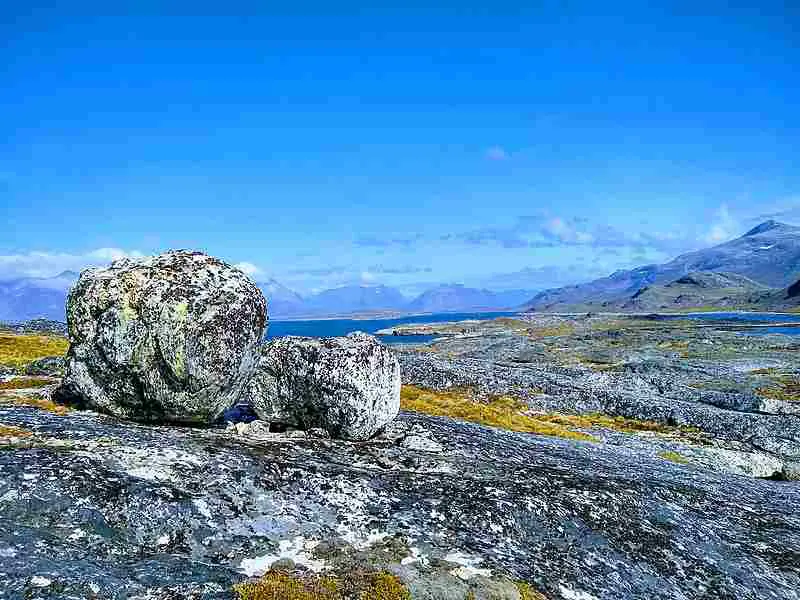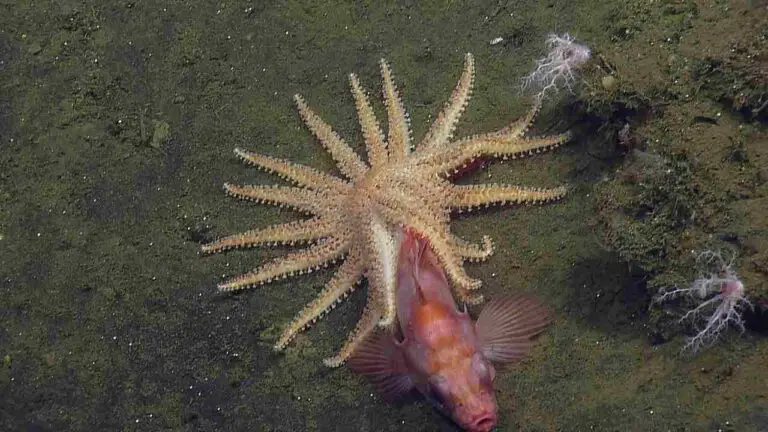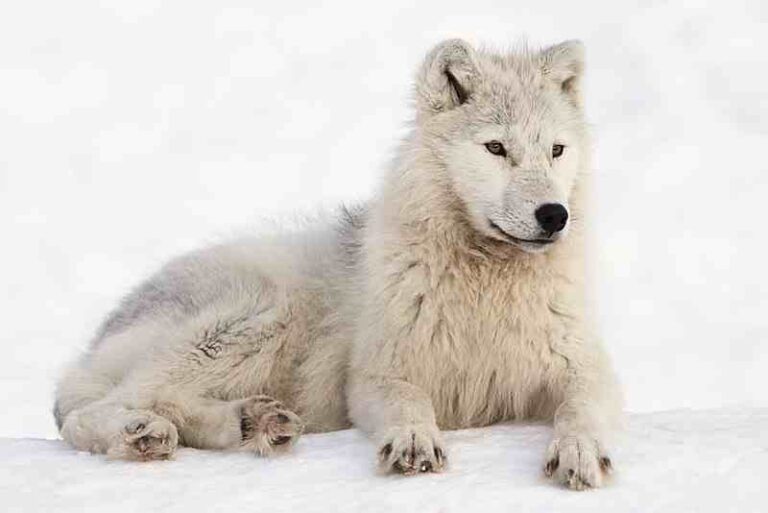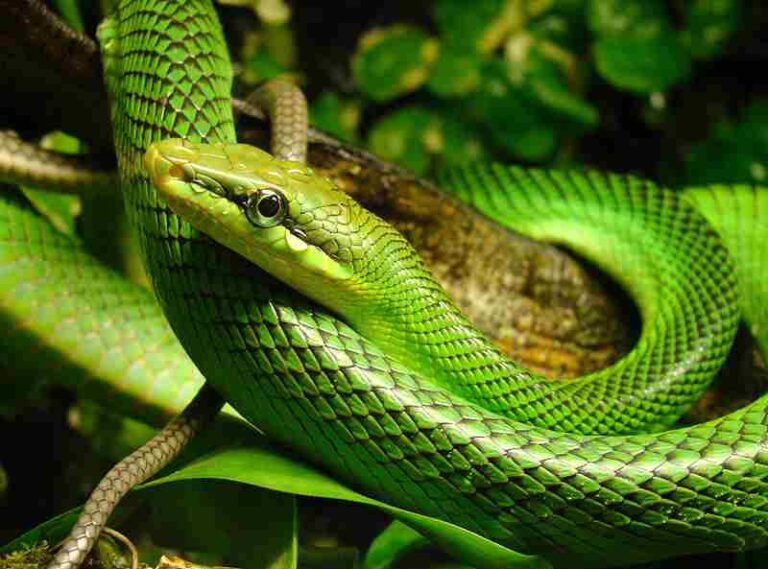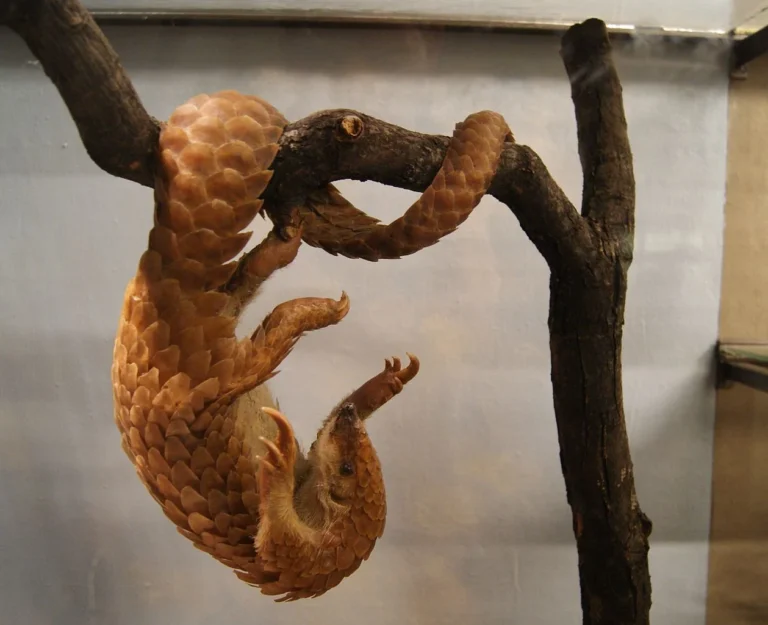9 Abiotic Factors in the Arctic and Their Relevance, Characteristics
Abiotic factors in the Arctic are; sunlight, atmospheric gases, permafrost, wind, physicochemical conditions, rocks, soil, dissolved gases, and nutrients.
This study discusses the abiotic factors in the Arctic, as follows;
1). Sunlight (as one of the Abiotic Factors in the Arctic Ecosystem)
Sunlight is an important abiotic factor in the Arctic, and plays a critical role in shaping as well as maintaining the unique attributes of this polar region.
It can be defined as visible light from solar radiation which is accompanied by heat, and utilized by autotrophs for photosynthesis.
The amount of sunlight available in the Arctic varies significantly during the different seasons, and leads to dramatic changes in organic lifecycle stages, and environmental conditions.
Polar Day and Polar Night in Arctic Environments
One of the most distinctive phenomena related to sunlight in the Arctic, is the occurrence of polar days and polar nights.
During the summer, the Arctic region experiences a condition of continuous daylight for extensive periods that may span several months, known as midnight sun or polar day [4].
Conversely, in the winter season, the region experiences polar night, where the sun stays below the horizon for extended periods of time.

Importance of Sunlight to Life in the Arctic
Sunlight is the ultimate source of energy for the entire Arctic ecosystem, and represents the most important link between abiotic and biotic factors in this biome.
It is used for photosynthesis in primary producers like algae and plants, and enables them to produce food and bioenergy which support the entire food chain/web.
The abundance and intensity of sunlight in the summer season, facilitates rapid growth of plants which serve as food for herbivores, that in turn, sustain carnivores and other high-level consumers.
Seasonality and Adaptive Impact of Sunlight in the Arctic
The periodic changes in amount of sunlight during the different seasons, have a profound influence on the life cycles and adaptive behaviors of Arctic wildlife.
For example, during polar day periods, several animals take advantage of the extended daylight condition, to find food and store energy for the subsequent extensive winter months [2].
Some species of birds migrate to the Arctic during the polar day period, to take advantage of increased food supply, and to breed.
Climatic Impact of Sunlight in the Arctic
The amount of sunlight and its periodic variations, directly affect the climatic conditions of the Arctic.
Polar night is characterized by extremely cold temperatures, while the polar day is accompanied by relatively mild conditions.
The presence or absence of sunlight is linked to the melting/thawing and freezing of sea ice, which influence the survival and habitat-availability, of Arctic marine animals.
Environmental Challenges Associated With Sunlight in the Arctic
The Arctic is currently faced with effects of climate change, which include alterations to the amount/intensity and duration of sunlight in the region.
Increasing mean temperatures are causing longer ice-free periods and earlier spring snowmelt, both of which impact the timing of important ecological processes or events like plant growth, animal breeding, and migration.
2). Atmospheric Gases
The Arctic atmosphere comprises of various gases that collectively play an essential role in the sustenance of life, maintenance of ecological balance, and regulation of climate.
The most abundant gases in the Arctic atmosphere include nitrogen, oxygen, carbon dioxide, water vapor and methane. They are briefly discussed in the points below;
Nitrogen constitutes roughly 78% of the Earth's atmospheric gas composition, while oxygen makes up around 21%.
Both of these gases are essential for combustion and respiration processes. Nitrogen is also an important element for plant growth, and it a core component of DNA and proteins.
Water vapor is considered the most abundant greenhouse gas in the atmosphere, and is responsible for the regulation of the Earth's temperature through the influence of the hydrological cycle on weather and climatic patterns.
Carbon dioxide (CO2) and methane (CH4) are two greenhouse gases that are important to the Earth's climate.
They are capable of trapping heat in the atmosphere, and contribute to the greenhouse effect. In recent years, the Arctic has experienced increased warming due to a rise in the atmospheric concentration of these gases, and this has resulted in extensive ice-melting among other environmental impacts.
Importance of Atmospheric Gases in the Arctic
Atmospheric gases are critical abiotic factors in the Arctic, and in all terrestrial and aquatic ecosystems across the entire planet.
They influence temperature, weather conditions and climatic trends, contributing the overall structure of the ecosystem, and affecting the adaptation and distribution of organisms.
Effects of Climate Change on the Arctic Region
Climate change has been behind alterations in the composition of atmospheric gases in the Arctic region.
Human activities like the burning of fossil fuels for electricity-generation, and the deforestation of adjacent areas, have caused increase in the levels of methane and carbon dioxide in the atmosphere.
This has in turn led to global warming, which also affects Arctic environments.
Status of Atmospheric Gases as Abiotic Factors
Atmospheric gases are abiotic factors because they are inorganic, non-living components of the ecosystem. While they have direct impacts on the physical conditions of the Arctic environment, they also indirectly affect biotic factors, including microbes, plants, and animals.
3). Permafrost (as one of the Abiotic Factors in the Arctic Ecosystem)
Permafrost is a defining, typical feature of the Arctic region and is fully involved in the shaping and modification of its landscape and microhabitats.
Permafrost can be defined as a layer of sediment, soil, or rock material, that stays frozen for at least two consecutive years [14]. This feature covers about 24% of exposed land in the Northern Hemisphere [7] with vast expanses of permanently-frozen soil occurring in the Arctic.

Structure, Formation of Arctic Permafrost
Permafrost forms under conditions where ground temperatures remain below freezing (0°C) for an extended period of time, which is possible due to the cold climate of polar regions.
It can be as thick as several meters, and occurs in diverse forms, including patchy, discontinuous permafrost that is interspersed with thawed ground; and continuous permafrost, which extends across large areas and to considerable depths [11].
Ecological Impact(s) and Importance of Permafrost in the Arctic
Permafrost plays an important role in the Arctic ecosystem and has multiple ecological impacts. These areas of importance range from erosion-control and carbon sequestration to microhabitat creation, and hydrological influence. All of the listed contexts are briefly discussed below;
Permafrost mitigates regional soil erosion by stabilizing the soil, thereby preventing excessive sediment mobility that could facilitate erosion as well as natural hazards like landslides.
The progressive thawing of permafrost due to climate change is a threat to the stability of coastlines and slopes, and is linked to increased cases of habitat loss and erosion.
Carbon sequestration is another important role of permafrost, which harbors vast amounts of organic carbon, in the form of frozen biological material from animals and plants.
When permafrost thaws, microbial biodegradation of previously stored organic matter causes greenhouse gases like methane and carbon dioxide to be released suddenly in large amounts, and contributes to climate change while compromising the efficiency of the Arctic region as a natural carbon sink.
Permafrost helps create essential habitats for various animal and plant species that are adapted to extreme cold (and dry) conditions. Many species in the Arctic species, such as certain shrubs, lemmings and Arctic foxes, lemmings, rely on the unique permafrost landscape for their survival.
The hydrological importance of permafrost can be traced to its function as a natural barrier to water flow/drainage, as it tends to form impermeable zones and ice lenses that restrict the flow of water.
Such restriction leads to the formation of wetlands, ponds and lakes, and creates diverse habitable areas for wildlife.
Threats to Permafrost in the Arctic Region
One of the most significant threats to permafrost in the Arctic is posed by climate change.
As global temperatures rise, thawing of permafrost becomes more rapid and extensive. This leads to various consequences including hydrological alteration, subsidence and geomorphological deformation, as well as greenhouse gas emission. Each of them is discussed briefly below;
Changes in permafrost thickness and areal coverage, can lead to alterations in the hydrology of the affected region, so that the distribution and availability of water resources are equally changed
The thawing of permafrost can also lead to land sinking or subsidence, which is a hazardous occurrence that causes geomorphological deformation and habitat loss; and can damage infrastructure mounted in Arctic locations
Permafrost thawing releases trapped greenhouse gases from the soil, so that global warming is accelerated
4). Wind
Wind is one of the prominent abiotic factors in the Arctic, and is involved in shaping the region's landscape, general ecology, and climate.
The Arctic is characterized by relatively-constant and intense winds, which occur especially during the winter months as cold air masses interact with warmer air currents from the ocean [9].
Impacts of wind on the Arctic ecosystem can be evaluated in terms of erosion, temperature regulation, snow drifting, and impacts on organic life (including vegetation). These factors are discussed below;
The powerful winds of the Arctic serve as an agent of erosion, as well as deposition, of rocks and soil/sediments.
Wind can break-up weakened rock masses, mobilize and transport loose particles across the landscape, in such a manner that leads to the redistribution of sediments and formation of sand dunes and the redistribution of sediment in the tundra
Thermal energy transfer is affected significantly by wind in the Arctic, which helps to distribute cold and heat across the region.
It can transport air masses of differing temperatures, including warmer air from lower latitudinal areas, and colder air from the polar areas, thereby influencing periodic temperature fluctuations and contributing to climate dynamics
Wind exacerbates the cold condition of the Arctic as a result of the wind-chill effect.
With highly-intense wind, even moderate temperature conditions can feel much colder. This makes the Arctic environment harsh for many organisms
Snow drifts in the Arctic tundra are often caused by wind.
As the wind blows, it causes snow to accumulate in certain areas while exposing other areas, leading to spatial variations in snow depth and coverage
Wind also contributes to the drifting-motion of sea ice in the Arctic Ocean. It can push ice sheets and flows in such a manner that affects ice distribution and dynamics
Lastly, strong winds can influence the distribution and growth of vegetation in the Arctic tundra. They contribute to the adaptations of tundra plants, and may cause the damage of some of these plants while inhibiting their growth, especially in exposed land areas

Overview of How Wind Affects the Arctic Tundra
Wind profoundly impacts the Arctic tundra by structuring and modifying its landscape, influencing climatic conditions, and affecting the spatial distribution, survival and adaptation(s) of animals and plants.
The constant nature and intensity of Arctic wind is responsible for the formation of unique geomorphological landform-features, like snowdrifts and dunes. It also affects sea currents and the mobility of sea ice.
Wind has a chilling effect that adds to the harshness of the Arctic, and makes survival more challenging for animals and plants, so that they are forced to adapt and alter their spatial distribution.
In addition, wind-driven sedimentary processes like aeolian erosion and deposition, influence nutrient cycling and terrain-development in the ecosystem
5). Physicochemical Conditions (as one of the Abiotic Factors in the Arctic Ecosystem)
The Arctic is subject to extreme physicochemical conditions due to its unique climate and geographic location.
These conditions have significant impact on the geology, ecology, and environmental processes occurring in the region.
Some physicochemical parameters in the Arctic are; temperature, salinity, glacial cover, light intensity/duration, pH, nutrient concentration, and ocean current dynamics. They are discussed summarily in the outline below;
The Arctic is known to experience cold temperatures, with average annual temperatures usually below freezing.
In the winter season, temperatures can fall to extremely low levels, while the summer may feature a relatively-short period of milder temperature conditions.
The cold temperatures affect many ecological processes of the Arctic, including animal metabolism, evolution and adaptation; and plant growth
Salinity in the Arctic Ocean is generally low in comparison to other oceans, due to continuous, massive influx of freshwater from adjacent rivers and melting ice [3].
This low salinity affects the physical properties of seawater, including its freezing point and density. It also influences the physiological adaptation and spatial distribution of marine organisms
Ice cover is a typical feature of the Arctic sea(s) for most of the year.
The presence of ice cover affects the efficiency/effectiveness of light penetration into the water body, and also impacts gas dissolution, exchange, and the movement of marine species.
Ice cover is also linked to the availability of habitat for Arctic animals like seals, seabirds and polar bears
Daylight hours in the Arctic are usually extensive during summer, with continuous sunlight for multiple months.
The winter faces a reverse scenario, with extended periods of darkness. Such variations in photoperiods play a major role in seasonality and its related processes, such as migration and breeding of species
As earlier stated, permafrost is a definitive feature of the Arctic terrestrial zone. It comprises of permanently frozen ground, and impacts the characteristics of soil, availability of water, and growth patterns of plants.
Thawing of permafrost due to climate change leads to changes in ecosystem functioning and structure
pH levels in Arctic waters tend to become lower and less alkaline with increasing urbanization and fossil fuel usage around the world.
This phenomenon is the result of acidification, which accompanies excessive carbon dioxide absorption and ice-melting. Changes in ocean pH in the Arctic, can have detrimental impacts on marine organisms, especially those with calcium carbonate skeletons or shells [8]
Nutrient levels in the Arctic ecosystems are relatively low, particularly in the water column. Limited availability of nutrients can inhibit primary productivity, species richness, diversity and abundance
Ocean currents, like the Beaufort Gyre and the North Atlantic Drift, influence the dynamics of water, nutrients, and heat in the Arctic Ocean. These currents play a role in the determination of glacial melting rates, organic distribution, and regional climatic patterns
6). Rocks
Rocks are an essential abiotic component of Arctic geology and landscape.
They play a role in determining the region's physical characteristics, creating habitat for organisms, and driving various ecological and geological processes.
The characteristics and relevance of rocks in the Arctic are discussed below.
Characteristics of Rocks in the Arctic
Characteristics of rocks in the Arctic include; compositional versatility and glacial modification. These are discussed in the following outline;
Various types of rocks occur in the Arctic region, including sedimentary, metamorphic and igneous rocks. These different rock types, vary in their origins and intrinsic properties, which contribute to the geological diversity of the Arctic as a whole

Accordingly, there is wide variation in the mineral composition of rocks in the Arctic ecosystem, and the different minerals can serve as inorganic nutrients in soil, for supporting the growth of vegetation
Glacial activity and processes are common in the Arctic region, and rocks have been weathered, modified and transported by glaciers, often leading to the formation of unique features like erratics, drumlins and moraines [1]
Permafrost often has an effect on the stability of rocks and the overall Arctic landscape. Alternate freezing and thawing cycles of permafrost can result in the formation of various geomorphic and mineralogical feature
Relevance of Rocks as Abiotic Factors in the Arctic Biome
The relevance of rocks in Arctic regions can be summarized to include their roles in regional geologic dynamics, habitat creation, glacial evolutionary processes, and the occurrence/exploitation of minerals and energy resources.
Geological processes are highly influenced by rocks in the Arctic, which are central elements in such processes including weathering, erosion, and sedimentation.
These geological processes contribute to the structuring of the Arctic landscape over time
Arctic rocks contribute to the creation of important habitats for organisms like mosses, small invertebrates and lichens. These organisms usually colonize rock masses and surfaces, where they grow and adapt to the harsh Arctic conditions
Studying rocks in the Arctic can help provide insights into the glacial evolutionary history of the region, including past glaciation events and climate conditions
Rocks in the Arctic may also contain valuable resources, such as metallic minerals, oil and gas [5]. The exploration and extraction of these resources can have major economic implications for the region
*Status of Rocks as Abiotic Factors
Rocks are considered abiotic factors because they are inorganic and non-living elements of the environment.
Abiotic factors are generally non-living components of an ecosystem that have influence over the conditions of the environment, and its inhabitant organisms.
Rocks are an important part of the physical environment, and have notable effect on the ecology of the Arctic.
*Overview of 3 abiotic factors in Antarctica
Three (3) abiotic factors in Antarctica are; sunlight, temperature and ice/glacier. The continent is characterized by its extremely cold temperatures, extensive ice sheets, and prolonged periods of sunlight in the summer months.
These factors are vital toward determining the physicochemical and biological conditions of the ecosystem, including the survival adaptations and strategies of organisms living in the region of Antarctica.
7). Soil (as one of the Abiotic Factors in the Arctic Ecosystem)
Arctic soils are a crucial component of the terrestrial ecosystems in the Northern Hemisphere.
These soils have unique attributes, and play an indispensable role in supporting Arctic vegetation, which in turn supports wildlife.
Characteristics of Arctic Soil
The characteristics of Arctic soil can be summarized to include its distinctive organic content, nutrient availability/concentration, and influence of glacier and permafrost. These are discussed below;
Arctic soils are generally rich in organic matter [13], which comprises of partially decomposed plant remains that have not undergone full biodegradation due to the cold, frozen conditions.
This layer of partially decomposed organic material is known as the "peat layer" or "active layer".

Nutrient limitations also occur in Arctic soils, due to leaching and slow decomposition rates and leaching caused by humid and cold conditions. This limitation in the availability of nutrients, influences the types of plants that can thrive in the Arctic tundra
Permafrost, or permanently frozen ground, is a typical feature of Arctic soils.
The upper layer of soil usually thaws in the short summer season, so that a thin active layer is created above the frozen, rigid permafrost
Cryoturbation can be defined as the displacement and mixing of soil particles due to repeated cycles of freeze-thaw. It is a common process in Arctic soils, and causes hummocky or polygonal characteristic patterns to form on the ground.
Relevance of Soil as one of the Abiotic Factors in the Arctic
The relevance of soil in the Arctic region is tied to its role in plant growth, carbon sequestration, wildlife habitat creation, and climatic conditions.
Despite the limitations in nutrient concentration, Arctic soils support diverse plant species which have adapted to the harsh and deficient conditions.
Plants that are common in the Arctic include low-growing vegetation, like dwarf shrubs, lichens and mosses.
The organic-rich Arctic soils act as an effective carbon sink, by storing a significant amount of carbon in the form of partially decomposed organic material.
There are concerns that recent warming conditions may trigger the release of this stored carbon and further contribute to climate change.
Arctic soils create microhabitat and provide food for various microbes, insects and small animals, and contribute to the nutritional foundation of the Arctic food web alongside photosynthesis by autotrophs
Physicochemical changes in Arctic soils, such as the thawing of permafrost, can have cascading effects on the region's ecological make-up, and climate.
*What the Soil in the Arctic is Called
The soil in the Arctic is called gelisol or cryosol; which is a type of mineral soil that forms from processes occurring in a glaciated, permafrost-inhabited environment [10].
Characteristics of cryosols include a thin, organic-rich active layer at the surface, and a rigid layer of permafrost underneath this active layer.
8). Dissolved Gases
Dissolved gases are an abiotic component of Arctic-aquatic ecosystems, where they are involved in supporting various life forms and influencing the overall sustainability of these fragile environments.
Characteristics of Dissolved Gases in the Arctic
Dissolved gases in Arctic water bodies are actively involved in processes of organic metabolism, and are influenced by physicochemical and biological/biotic factors and conditions.
Below is an outline summarizing the characteristics, dynamics and processes of Arctic dissolved gases;
Oxygen (O2) is the most important dissolved gas in Arctic waters.
This is because it is required for the survival of most aquatic organisms, including microbes, invertebrates, mammals and fish, invertebrates. Oxygen levels may vary with salinity; biological activity, and temperature of the water
Carbon Dioxide (CO2) is another essential dissolved gas in Arctic water bodies.
It is produced during respiration and is needed for photosynthesis by algae and aquatic plants. The concentration of carbon dioxide can also be affected by organic decomposition and atmospheric exchange
Methane (CH4) is a highly-potent greenhouse gas that can be found dissolved in the Arctic water column.
It is a product of various geological and biological processes, like microbial decomposition of biomass in sediments
Nitrogen (N2) commonly occurs in the form of dissolved nitrogen gas (N2) in Arctic water bodies.
It is not as reactive as other forms of nitrogen, but can still impact the cycling and availability of nutrients for marine organisms
Relevance of Dissolved Gases in the Arctic Ecosystem
Oxygen is crucial for supporting the survival of aquatic organisms. Adequate levels of dissolved oxygen are therefore necessary in order to maintain diverse, healthy marine communities in the Arctic.
Dissolved carbon dioxide is central to the carbon cycle of Arctic waters. Aquatic algae and plants utilize carbon dioxide in the process of photosynthesis, which helps to reduce atmospheric levels of carbon dioxide.
Dissolved methane gas in Arctic waters, can be emitted to the atmosphere in zones where the water column interacts with sediments rich in methane. Such emissions are a subject of scientific interest because they can contribute to climate change, and are also triggered by warming events [6].
Climate feedback can be derived from studying trends in the concentration of dissolved gases like carbon dioxide and methane, in Arctic waters.
This is because gaseous concentration is influenced by changing environmental conditions, such as melting permafrost and warming temperatures. Changes in these gas concentrations are indicative of trends in regional and global climates.
Elevated levels of carbon dioxide in seawater can cause ocean acidification, which affects the ability of marine organisms to build skeletal components and shells. This phenomenon can have notable impacts on Arctic marine biodiversity.
9). Nutrients (as one of the Abiotic Factors in the Arctic Ecosystem)
Nutrients refer to elements and compounds that are critical for the growth and development of living organisms.
In the Arctic, availability of nutrients plays a significant role in supporting the diverse, fragile ecosystems found in both aquatic and terrestrial environments.
Examples and Characteristics of Nutrients in the Arctic Ecosystem
Nutrients in the Arctic ecosystem include nitrogen, phosphorus, carbon and silica. They are discussed briefly below;
Nitrogen (N) is a fundamental nutrient that is needed for the synthesis of essential biomolecules in animals and plants like nucleic acids and proteins.
It occurs in different forms in the Arctic, which include organic nitrogenous compounds, and dissolved inorganic nitrogen (nitrite, ammonium, nitrate)
Phosphorus (P) is another critical nutrient that is involved in cellular metabolism, energy transfer, and the formation of RNA and DNA. In the Arctic ecosystem, it commonly occurs in the form of dissolved inorganic phosphate [12]
Carbon (C) is the main building block of organic molecules and is essential for growth and reproduction in living organisms.
It can be found in the form of dissolved inorganic carbon (carbon dioxide) and organic carbon derived from organic matter
Silica (Si) is a critical nutrient for some marine organisms, especially diatoms, which utilize it for building their cell walls. It occurs abundantly in Arctic waters, especially in areas where the productivity of diatoms is high
Relevance of Nutrients in the Arctic
The relevance of nutrients in the Arctic can be traced to their roles and involvement in primary production, food web sustenance, biogeochemical cycling, ocean acidification and climate change.
Nutrients like phosphorus and nitrogen, are essential for primary production in the Arctic. These nutrients are known to support the growth of photosynthetic organisms like macroalgae and phytoplankton, forming the foundation of the food web.
The availability of nutrients influences the distribution and abundance of primary producers. These variables in turn affect the diversity and ecologic success of herbivores and other consumers, including carnivorous seabirds and marine mammals
Various biogeochemical processes are behind the cycling of nutrients.
They include organic matter-decomposition, regeneration, and nutrient uptake by organisms. These cycles are critical for maintaining the availability/supply of nutrients
Elevated levels of carbon dioxide levels in Arctic water bodies can cause ocean acidification, which affects the ability of marine organisms to build and retain some of their skeletal components, such as calcareous tests. This phenomenon can have major impacts on marine life, especially for calcifying organisms like corals and mollusks
Lastly, nutrient availability can influence the carbon sequestration-capacity, and productivity, of Arctic ecosystems. As the Arctic experiences progressive increase in average temperatures and changes in the density and areal-span ice cover, nutrient-cycling dynamics may be altered, in such a manner that potentially affects carbon dioxide exchange between the atmosphere and ocean
Conclusion
Abiotic factors in the Arctic are;
1. Sunlight
2. Atmospheric Gases
3. Permafrost
4. Wind
5. Physicochemical Conditions
6. Rocks
7. Soil
8. Dissolved Gases
9. Nutrients
References
1). Balasubramian, A. (2011). "Glacial Landforms." Country-wide Class room Educational TV programme-Gyan Darshan, EMRC-MYSORE. Available at: https://doi.org/10.13140/RG.2.2.26558.08002. (Accessed 29 July 2023).
2). Blix, A. (2016). "Adaptations to polar life in mammals and birds." Journal of Experimental Biology 219(8):1093-1105. Available at: https://doi.org/10.1242/jeb.120477. (Accessed 29 July 2023).
3). Carmack, E.; Yamamoto-Kawai, M.; Haine,T.; Bacon, S.; Bluhm, B.; Lique, C.; Melling, H.; Polyakov, I. V.; Straneo, F.; Timmermans, M.-L.; Williams, W. J. (2016). "Freshwater and its role in the Arctic Marine System: Sources, disposition, storage, export, and physical and biogeochemical consequences in the Arctic and global oceans." Journal of Geophysical Research: Biogeosciences 121(3). Available at: https://doi.org/10.1002/2015JG003140. (Accessed 29 July 2023).
4). Connan-McGinty, S.; Banas, N. S.; Berge; J.; Cottier, F. R.; Grant, S.; Johnsen, G.; Kopec, T.; Porter, T.; McKee, D. (2022). "Midnight Sun to Polar Night: A Model of Seasonal Light in the Barents Sea." Wiley, Journal of Advances in Modeling Earth Systems 14(10). Available at: https://doi.org/10.1029/2022MS003198. (Accessed 29 July 2023).
5). Houseknecht, D.; Bird, K. (2006). "Oil and Gas Resources of the Arctic Alaska Petroleum Province." USGS professional paper. Available at: https://www.semanticscholar.org/paper/Oil-and-gas-resources-of-the-Arctic-Alaska-Province-Houseknecht-Bird/6f82b7be9a9a3700293c3cb5ef8040835853f5db. (Accessed 29 July 2023).
6). James, R.; Bousquet, P.; Bussmann, I.; Haeckel, M.; Kipfer, R.; Leifer, I.; Niemann, H.; Ostrovsky, I. S.; Piskozub, J.; Rehder, G.; Treude, T.; Vielstädte, L.; Greinert, J. (2016). "Effects of climate change on methane emissions from seafloor sediments in the Arctic Ocean: A review: Methane Emissions from Arctic Sediments." Limnology and Oceanography 61(S1):S283–S299. Available at: https://doi.org/10.1002/lno.10307. (Accessed 29 July 2023).
7). Khan, A. R.; Pandey, P.; Ray, Pk. C.; Chaturvedi, V. (2019). "Detecting the Permafrost Distribution with the help of Remote Sensing and GIS in the North-western Himalaya." Climate Change and Extreme Events in the Himalayan Region (C2E2). Available at: https://doi.org/10.13140/RG.2.2.36342.37440. (Accessed 29 July 2023).
8). Krasting, J. P.; De Palma, M.; Sonnewald, M.; Dunne, J. P.; John, J. (2022). "Regional sensitivity patterns of Arctic Ocean acidification revealed with machine learning." Springer Nature, Communications Earth & Environment 3(1). Available at: https://doi.org/10.1038/s43247-022-00419-4. (Accessed 29 July 2023).
9). Lawrence; Z.; Perlwitz, J.; Butler, A. H.; Manney, G. L.; Newman, P.; Lee, S.H.; Nash, E. R. (2020). "The Remarkably Strong Arctic Stratospheric Polar Vortex of Winter 2020: Links to Record‐Breaking Arctic Oscillation and Ozone Loss." Wiley, Journal of Geophysical Research Atmospheres 125(22). Available at: https://doi.org/10.1029/2020JD033271. (Accessed 29 July 2023).
10). Ping, C.-L. (2013). "Gelisols: Part I. Cryogenesis and State Factors of Formation." Soil Horizons 54(3). Available at: https://doi.org/10.2136/sh2013-54-3-gc. (Accessed 29 July 2023).
11). Shur, Y. L.; Jorgenson, M. T.; Kanevskiy, M. (2011). "Permafrost." Encyclopedia of Snow, Ice and Glaciers (pp.841-848). Available at: https://doi.org/10.1007/978-90-481-2642-2_400. (Accessed 29 July 2023).
12). Tessin, A.; März, C.; Kedra, M.; Matthiessen, J.; Morata, N.; Nairn, M.; O'Regan, M.; Peeken, I. (2020). "Benthic phosphorus cycling within the Eurasian marginal sea ice zone." The Royal Society, Philosophical Transactions of The Royal Society A Mathematical Physical and Engineering Sciences 378(2181). Available at: https://doi.org/10.1098/rsta.2019.0358. (Accessed 29 July 2023).
13). White, D. M.; Garland, D. S.; Ping, C.-L.; Michaelson, G. (2004). "Characterizing soil organic matter quality in Arctic soil by cover type and depth." Cold Regions Science and Technology 38(1):63-73. Available at: https://doi.org/10.1016/j.coldregions.2003.08.001. (Accessed 29 July 2023).
14). Zhang, T.; Nelson, F. E.; Gruber, S. (2007). "Introduction to special section: Permafrost and Seasonally Frozen Ground Under a Changing Climate." Journal of Geophysical Research Atmospheres 112(F2). Available at: https://doi.org/10.1029/2007JF000821. (Accessed 29 July 2023).
